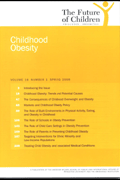Studies in this week’s Hutchins Roundup find that fiscal stimulus can lower interest rates on local consumer loans, the burden of payroll taxes falls on employers, and more.
Want to receive the Hutchins Roundup as an email? Sign up here to get it in your inbox every Thursday.
Fiscal stimulus can lower interest rates in local economies
Using data from defense spending in local economies, Alan Auerbach and Yuriy Gorodnichenko of the University of California, Berkeley, and Daniel Murphy of the University of Virginia find that expansionary government spending – in addition to the usual channel of increasing demand – also can lower the interest rates on local consumer loans. The added federal spending, they say, leads banks to judge potential borrowers as less risky. The effect is stronger for loans most likely to be kept on bank balance sheets, such as used-car loans, than for mortgages. Fiscal stimulus can work not only by increasing output but also through this credit channel, so stimulus directed to areas particularly affected by a recession may be especially effective.
Firms bear the burden of payroll taxes
Using data on 150,000 Finnish firms from 1996 to 2009, Youssef Benzarti of University of California, Santa Barbara, and Jarkko Harju of VATT Institute for Economic Research find that firms bear the cost of payroll taxes and not workers, contrary to conventional economic wisdom. The authors exploit an unusual feature of Finnish payroll taxes: Employers face a significant increase in tax rates if they exceed a set depreciation threshold. The rationale for this approach, adopted in 1973, was to help labor-intensive firms by reducing their labor costs. The authors find that higher payroll taxes do not affect the earnings of the employees, but firm labor costs decrease by 17.5% primarily because employers employ fewer workers – particularly low-skilled workers and workers performing routine and manual tasks. Firms also decrease their investments, challenging the idea that firms substitute away from labor towards capital.
Graduating during a recession increases mortality
Hannes Schwandt of Northwestern University and Till M. von Wachter of the University of California, Los Angeles, quantify the impact of entering the labor market during a recession on various measures of socio-economic status and on mortality. They find that a 3.9 percentage point increase in the unemployment rate at the time of labor market entry is associated with a decrease in life expectancy by six to nine months. These higher mortality rates are driven mainly by heart disease, lung cancer, liver disease, and drug poisoning. In addition, they observe that cohorts entering the labor market during a recession have lower marriage rates, higher divorce rates, smaller family sizes, and work more while receiving less welfare support. These findings imply that the costs of recessions extend beyond initial earnings effects.
Chart of the week:
 Source: Wall Street Journal
Source: Wall Street Journal
Quote of the week:
“[O]ne risk that could alter the outlook is if inflationary pressures build up more quickly than currently expected. Admittedly, with little room currently to lower rates in a downturn, inflation somewhat exceeding projections could be a good thing. But economists do not have a very precise understanding of how inflation expectations form, and of course an economy eventually running too hot could increase inflationary pressure,” says Eric Rosengren, president of the Federal Reserve Bank of Boston.
“In my view, another potential risk is that low interest rates and a booming economy will encourage investors to increasingly ‘reach for yield’ – that is, they will take on more risk in order to raise the nominal returns they are receiving (since the associated risk premiums embedded in the returns to riskier assets compensate for that added risk). Real estate is an area of the economy that is historically susceptible to this risk-taking. Both residential and commercial real estate are sensitive to the level of interest rates, and are widely held as collateral by leveraged financial institutions…”
“To be fair, there are also downside risks to the economic outlook, as well – primarily centered on the potential for trade disruptions and slowing growth among our trading partners. But I see the potential risks to inflation and financial stability as somewhat more concerning, overall.”
The Brookings Institution is committed to quality, independence, and impact.
We are supported by a diverse array of funders. In line with our values and policies, each Brookings publication represents the sole views of its author(s).











Commentary
Hutchins Roundup: Fiscal stimulus, payroll taxes, and more
January 16, 2020